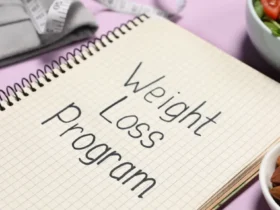Losing 20 pounds in a single month is an ambitious goal that catches attention with bold promises. But is it realistic, safe, or sustainable?
Let’s break down the science, practical strategies, and potential pitfalls of aiming for such rapid weight loss, while providing a plan that prioritizes health.
The Math Behind Losing 20 Pounds
To lose one pound of fat, you need to create a calorie deficit of approximately 3,500 calories. For 20 pounds, that’s a staggering 70,000-calorie deficit in 30 days, or about 2,333 calories per day.
The average person burns 1,800–2,500 calories daily, depending on factors like age, gender, activity level, and metabolism.
Creating such a large deficit through diet and exercise alone is challenging and often unsustainable. Let’s explore what it takes.
Is It Possible?
Technically, yes, but it’s not just fat you’d be losing. Rapid weight loss often includes water weight, glycogen stores, and even muscle mass.
Extreme calorie restriction or intense exercise regimens can lead to quick results, but they come with risks like nutrient deficiencies, fatigue, and muscle loss.
For most people, a safer target is 1–2 pounds per week, or 4–8 pounds per month, as recommended by health experts.
That said, individuals with higher starting weights or those under medical supervision (e.g., in programs like medically guided weight loss) may lose more initially due to water weight and fat.
Here’s a plan that maximizes safe weight loss while aiming for significant results.
The Plan: A Balanced Approach
This plan combines diet, exercise, and lifestyle changes to optimize weight loss while minimizing health risks.
Always consult a healthcare professional before starting any weight loss program.
1. Nutrition: Create a Calorie Deficit
- Calorie Intake: Aim for a daily deficit of 500–1,000 calories, which could lead to 1–2 pounds of fat loss per week. Use a calorie calculator to determine your maintenance calories, then subtract 500–1,000. For example, if your maintenance is 2,500 calories, eat 1,500–2,000 daily.
- Macronutrient Balance:
- Protein: 25–30% of calories (e.g., lean meats, eggs, tofu, legumes) to preserve muscle mass.
- Carbs: 40–50% of calories (e.g., vegetables, whole grains, fruits) for energy.
- Fats: 20–25% of calories (e.g., avocados, nuts, olive oil) for hormonal health.
- Meal Timing: Consider intermittent fasting (e.g., 16:8 method—16 hours fasting, 8 hours eating) to help control hunger and reduce overall calorie intake.
- Hydration: Drink 8–12 cups of water daily to support metabolism and reduce water retention.
- Sample Day:
- Breakfast: Greek yogurt with berries and chia seeds (300 calories).
- Lunch: Grilled chicken salad with veggies and olive oil dressing (400 calories).
- Snack: Apple with almond butter (200 calories).
- Dinner: Baked salmon, quinoa, and steamed broccoli (500 calories).
2. Exercise: Burn Calories and Build Muscle
- Cardio: 4–5 sessions per week, 30–45 minutes each (e.g., brisk walking, cycling, or running). Aim to burn 300–500 calories per session.
- Strength Training: 3–4 sessions per week to preserve muscle mass and boost metabolism. Focus on compound movements like squats, deadlifts, and push-ups.
- NEAT (Non-Exercise Activity Thermogenesis): Increase daily movement—take stairs, walk during calls, or stand while working—to burn an extra 100–300 calories daily.
3. Lifestyle: Support Long-Term Success
- Sleep: Aim for 7–9 hours per night. Poor sleep disrupts hunger hormones, increasing appetite.
- Stress Management: Practice mindfulness or yoga to reduce cortisol, which can promote fat storage.
- Accountability: Track food intake and exercise using apps like MyFitnessPal or a journal to stay consistent.
Can This Plan Get You to 20 Pounds?
With this plan, you might lose 8–12 pounds of fat in a month, plus additional water weight (potentially 5–10 pounds) if you reduce carbs or have a higher starting weight. Hitting exactly 20 pounds is possible for some but depends on factors like:
- Starting Weight: Heavier individuals lose weight faster initially.
- Adherence: Sticking to the plan without cheat days is critical.
- Body Composition: Water weight loss is more significant early on.
However, losing 20 pounds of pure fat in 30 days is unlikely without extreme measures, which can harm your health.
Risks of Rapid Weight Loss
- Muscle Loss: Severe calorie deficits can break down muscle tissue, slowing metabolism.
- Nutrient Deficiencies: Cutting calories too low risks missing essential vitamins and minerals.
- Gallstones: Rapid weight loss can increase the risk of gallstone formation.
- Metabolic Slowdown: Your body may lower its metabolic rate to conserve energy, making further weight loss harder.
A More Sustainable Approach
Instead of fixating on 20 pounds in one month, aim for consistent progress over 2–3 months.
A loss of 8–12 pounds per month is safer, preserves muscle, and is more likely to stay off. Focus on:
- Building healthy habits (e.g., cooking at home, regular exercise).
- Monitoring progress with measurements beyond the scale, like waist circumference or energy levels.
- Celebrating non-scale victories, like improved strength or better sleep.
Conclusion
Losing 20 pounds in one month is a lofty goal that’s technically possible for some but comes with significant challenges and risks.
The plan outlined here—combining a moderate calorie deficit, balanced nutrition, exercise, and lifestyle changes—can help you lose a substantial amount of weight safely, potentially approaching that target if conditions are right.
For sustainable results, prioritize health over speed and consult a professional to tailor the plan to your needs.
Disclaimer: Always seek medical advice before starting a weight loss program, especially for rapid weight loss or if you have health conditions.
















Leave a Reply